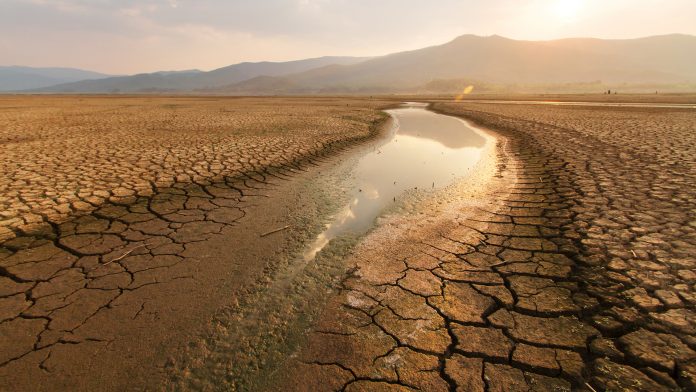A team of researchers from the University of East Anglia (UEA) have discovered that more frequent and longer-lasting droughts caused by rising global temperatures pose a significant risk to people and ecosystems around the world.
Led by the Tyndall Centre for Climate Change Research, the research quantified the projected impacts of alternative levels of global warming upon the probability and length of severe drought in six different countries.
The study showed that even a small temperature increase of 1.5 °C causes serious dangers in countries such as India, China, Ethiopia and Egypt. Through studying countries with a range of different temperatures, weather and sizes, the research shows that an increase in global temperatures and frequent droughts will have a dangerous impact on all climates.
Projected impacts of increasing temperatures
Droughts can have major impacts on biodiversity, agricultural yields and economies. Scientists project that all six countries involved in the study will need to deal with water stress, potentially through shifting crop varieties or irrigation. Therefore, the amount of adaptation required to deal with the increase in drought increases with rising global temperatures.
Jeff Price, associate professor of Biodiversity and Climate Change at UEA, said: “Current pledges for climate change mitigation which are projected to still result in global warming levels of 3 °C or more, would impact all the countries in this study.
“For example, with 3 °C warming, more than 50% of the agricultural area in each country is projected to be exposed to severe droughts lasting longer than one year in a 30-year period.
“Using standard population projections, it is estimated that 80 to 100% of the population in Brazil, China, Egypt, Ethiopia, and Ghana – and nearly 50 per cent of the population of India – are projected to be exposed to a severe drought lasting one year or longer in a 30-year period.”
India and China both have large areas of ‘permanent’ ice and snow. In a three degrees warming scenario, 90% of frozen areas are projected to face severe droughts that last for more than 30 years. As many of these areas form the countries’ major river systems, meaning the water supply for millions of people will decline.
Urban areas generally show the same pattern as frozen areas. Areas along rivers, streams and reservoirs in particular, may face increased competition for water resources.
In most of the countries, the projected increase in drought probability increases linearly with increasing temperatures. The researchers found that Egypt was an exception, where even a slight temperature increase would lead to large increases in drought probability.
“Not only does the area exposed to drought increase with global warming, but it also increases the length of the droughts. In Brazil, China, Ethiopia, and Ghana, droughts of longer than two years are projected to occur even in a 1.5 °C warming scenario,” explained Professor Rachel Warren, who led the study.
Meeting the conditions of the Paris Agreement
The team argued that meeting the conditions of the Paris Climate Accords, which is to keep rising temperatures well below two degrees, would significantly reduce the risks associated with droughts and temperature increase.
Dr Price commented: “We found that meeting the long-term temperature goal of the Paris Agreement, that is limiting warming to 1.5 °C above pre-industrial levels, is projected to greatly benefit all of the countries in this study, greatly reducing exposure to severe drought for large percentages of the population and in all major land cover classes, with Egypt potentially benefiting the most.”
Meeting the Paris Accords could have major benefits in terms of reducing severe drought risk in these six countries, in all major land cover classes and for large percentages of the population worldwide.
“This requires urgent global scale action now to stop deforestation (including in the Amazon) in this decade, and to decarbonize the energy system in this decade, so that we can reach global net zero greenhouse gas emissions by 2050,” concluded Professor Rachel Warren, lead author of the study.





